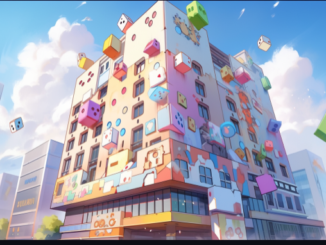The Fun Paradox
While playing videogames, children seem to reach immersion levels not found anywhere else. They go to sleep thinking about how soon they can be awake again so they can keep playing. While they are playing, you can scream; you can do summersaults; they will not break concentration. And if you question them about the game, they can recite you so much lore that it could easily fill a history manual. Of course, we want children to learn with as much excitement and engagement as they play!
But if games are mostly used for fun and to escape reality, using games for learning could break that purpose and become paradoxical. And that is where educational game development gets stuck.
That has not stopped researchers, game developers and educators from producing millions of educational games, some more successful than others, using different genres, different processes, mechanics, game elements, to the point where the variety of such tools is becoming too much – and for so little result.
There have been so many failed attempts. And with each experiment that did not give the results developers desired, they looked at creating more complex games and using more advanced technologies such as 3D, AR and even VR; searching for what was missing.
The answer cannot be found in technology, or by giving the user a wider range of graphic and mechanical possibilities to explore in the games, just as that is not the answer for any sort of videogame.
What is missing in educational games is, literally, the size of a world

Developers and educators often confuse the reasons why gamers play. If they have not played themselves, it is easy to place all games in the same “bag”. In reality, the reasons for playing are many and not limited to fun elements. Curiosity, development, creating alternatives, looking for possibilities, exploration, relaxation, are all possible motives.
And that is where worldbuilding becomes an interesting system.
By creating games that children play, not only because they are fun, but also because they become intertwined with the story and immersed into the adventures and the game world, we find that even when the game is forcing players into doing meaningless and repetitive tasks, they will happily grind if it allows them to progress and evolve.
Any D&D player knows that. As WoW gamers can tell you, while they take eight-hour-long strolls, playing is not always fun. Consider those hardcore old school Runescape players, who would spend weeks in a poorly designed Java-based game simply fishing. Yes, you read that right – not catching monsters or fighting dark powers – fishing.

And that is due to the existence of a complex and complete world. Just as in fantasy literature, success comes when a game is full of elements such as geography, weather variations, a societal structure, a socioeconomic fabric, important characters, a massive amount of history that adds depth, and a narrative that places the gamer inside the story and the events which unfold. Developing games is also about creating worlds for the players.
Without a whole world to explore, playing might become repetitive, boring even, and if you remove the fun element, you remove any motivation for the gamer to play. It still might be better than simply studying, but not by a lot.
Research says as much, with gamified learning environments producing lower long-term retention learning rates than schools (Putz & Treibmaier, 2019). On the other hand, role playing games show higher immersion rates and, even better, a positive connection between gameplay and learning (Sancho, et al., 2009).
Worldbuilding as a System

Worldbuilding is not just a tool for creating good and immersive games. It can also be a system, and a good one at that. Designing worlds is a complex procedure, which is full of dangers, just like the cliffs that surround the Argonath. Very much like going down the rabbit hole for the first time, it is not for the faint of heart. But if you have the talent of a seeker and the wits of a Citadel scholar, you just might find that this tool can become your dæmon.
Even when designing the simplest of games, you probably need characters. And those characters are alive. They communicate with the player. How do they talk; with an accent? If yes, why? Where do they come from; some far away land? Sure. Why there? What are they doing so far from home?
The scenarios where the game occur are there for a reason, your player must move through mountains. Which ones? How are they named? Where are they located? Now the action moved to the moon. Does that make any sense? Probably not.
Here is one last example. Your player has to complete a set of tasks; let us say, a series of mathematical equations. It is fun, surely. It is also educational. If completed, the player receives a badge, an achievement and wins a hat for their avatar! Cool, right? Wrong! They are working just so they can customize their avatar?!

What about the story behind the equations? Why those? Why not create a scenario where those equations help rescue a walrus from being captured by evil pirates? Wouldn’t that be more fun? Now let us expand! The Walrus is named Tom and he is very friendly. The player is now in the Arctic. Why? You were sent on an expedition by the Royal Academy of Walrus Protectors of the Kingdom of Wallabe. This is just one of the missions you see! Walruses are in grave danger, especially those from the Droughtnought Tribe because their chief is very stubborn. Those pirates you managed to avoid earlier, remember? You did that by completing a set of equations to calculate the strength necessary to break the metal bars in their cages. Then you followed them to Ground Kindir, their hideout. What next? Maybe another calculation to avoid detection? And so on.
The bigger the world, the more depth you can give the story and the context in which it plays out. This also means that, even if you decide not to use 90% of the world created, it now has room to expand; without breaking away from the narrative built; without “betraying” your players who are more curious than ever about the fate of that world and its characters. Worldbuilding can be, as you see, an enormously powerful system.

Worldbuilding for Game-based Learning Environments and Collaboration
Creating worlds for educational games is an interesting challenge for two reasons. First, it implies a collaboration between several professionals, game developers, designers, publishers and, most importantly, teachers; all of whom have their own set of constraints and desired outcomes.
Game developers, for instance, focus on game mechanics, which might or might not be useful to teachers, who are more concerned about the means of getting the educational contents inside the game. Publishers might be worried about what type of content is appropriate for a school scenario. Will it include any sort of violence or will it, even accidentally, create of negative impact on the learners? Designers, therefore, are also under a lot of pressure to create acceptable content.
The second challenge can also be an opportunity. Worldbuilding for education means creating a mixture of game content such as narrative, quests and adventures and educational contents. The more learning moments and information you can insert into a narrative without breaking immersion, the better. This requires imagination. And a lot of people have more creativity than just one. Each team element can bring their own ideas, scenarios, adventures, characters, and all their individuality.
But even if you do need to “steal” a few moments from the game to teach the player something they absolutely need to learn for the educational objectives you set for the game; if your story is engaging enough, then, just as they are willing to spend hours grinding away in any other RPG, they will listen to all the teachers have to say.

A Small Note on Discrimination
Plenty has been said about looking down on people who are gamers, but extraordinarily little seems to be changing. Viewed by a large part of society as antisocial by nature, they are geeks, freaks, weirdos. And even among those who accept gamers, at least superficially, what I find even more intriguing is the negative mindset towards anything game-related.
The same applies to anything fantasy-related. Worldbuilding requires anyone who attempts it to get out of a world-sized box and create a new one. It is, not only a massive challenge, but a creativity test. It most definitely should not be looked down upon, as anyone who can create a whole new world just through their mind should be, at the very least, encouraged and commended.
“May the worlds you build be better than the one you inherited”
– Trent Hergenrader
References and further reading:Sancho, P., Moreno-Ger, P., Fuentes-Fernández, R. & Fernandéz-Manjón, B., 2009. Adaptive Role Playing Games: An Immersive Approach for Problem Based Learning. Educational Technology & Society, pp. 110-124.
Putz, L.-M. & Treibmaier, H., 2019. Increasing Knowledge Retention through Gamified Workshops: Findings from a Longitudinal Study and Identification of Moderating Variables: Proceedings of the 52nd Hawaii International Conference on System Sciences. Hawaii, s.n.
- Liber Domus – Interview with Eduardo Nunes - 9th July 2021
- Digital Games as Roadmaps to Meaningful and Powerful Change - 4th May 2021
- Worldbuilding in Game-based Learning Environments – A System and a Tool - 13th January 2021





Eduardo! I compliment you on this persuasive and positive piece about educational games, world building — and so much more. I like to think I script people into stories and worlds in the educational games I develop for adults to solve business problems. It is illuminating to consider all the elements of storytelling, role playing and world building that immerse a player and make them care about the fate of the world and the characters in it. For me, your knowledge and examples help me add depth to my creations and imagine even bigger worlds to play and learn in. Fascinating work you’re doing to act on your passions. Thank you for having the energy and heart to share it in such a digestible way.
Hi Sue, thank you for your reply, it really is interesting to build worlds for business cases as it adds more layers and could lead to curious results among participants.
Thank you once more for comment, it means a lot!